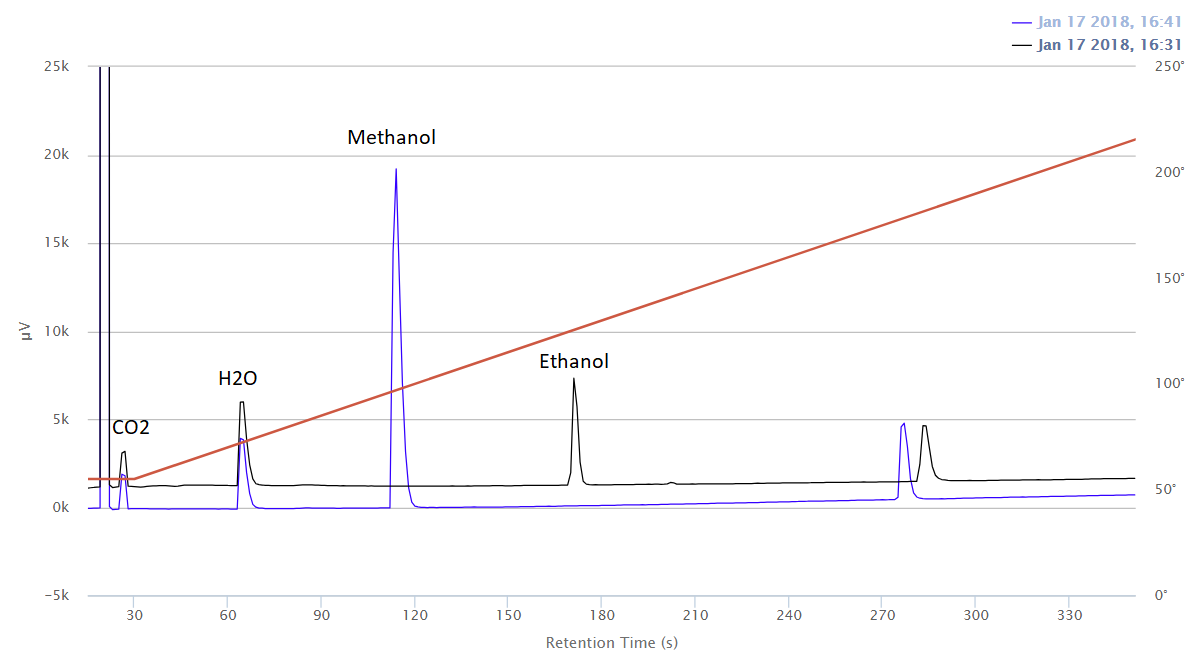CO2 methanol ethanol analysis
The analysis of light volatile solvents in a headspace can find many applications. For example, in pharmaceutical industry, for control of drying processes or in research, for process control.
The MicroGC Fusion integrates column temperature programming for each module. This allows analysis of a large portion of solvents on up to one or two modules.
Moreover, some compounds whose elution could be difficult in isotherm are now much better analyzed. Temperature programming is an excellent tool, well known in GC. Indeed, the fast temperature ramp allows to obtain narrower peaks. The signal to noise ratio is then much better and the sensitivity is also better.
This application note illustrates analyses obtained for a sample containing CO2, H2O, methanol, ethanol, isobutyl alcohol and 2-butanol. The separation of the latter two compounds was not optimized in this example.

Compound identification: Carbon dioxide (CO2), H2O (water, moisture), methanol (CH3OH), ethanol (C2H6O), isobutyl alcohol and 2-butanol.
Instrument : Micro GC Fusion module RTQ
Method :
Column: RT-Q 12m
Column temperature :
- Programming: 55°C for 30 seconds > 210°C (1°C/s)
The Micro GC Fusion, thanks to the temperature programming, allows the improvement of the performances for the analysis of light solvents.
Indeed, compared to the isotherm, temperature programming allows a better signal to noise ratio. Thus, we gain in resolution and sensitivity. On the other hand, the possibility to take advantage of the whole working range of the chromatographic column allows to reduce the number of necessary modules .
Learn more about the benefits of Micro GC Fusion.
Keywords: chromatography, micro gc, sensitivity, solvent analysis, temperature programming, column plot
